Identification of high-performing antibodies for the reliable detection of Tau proteoforms by Western blotting and immunohistochemistry
- PMID: 38761203
- PMCID: PMC11102361
- DOI: 10.1007/s00401-024-02729-7
Identification of high-performing antibodies for the reliable detection of Tau proteoforms by Western blotting and immunohistochemistry
Abstract
Antibodies are essential research tools whose performance directly impacts research conclusions and reproducibility. Owing to its central role in Alzheimer's disease and other dementias, hundreds of distinct antibody clones have been developed against the microtubule-associated protein Tau and its multiple proteoforms. Despite this breadth of offer, limited understanding of their performance and poor antibody selectivity have hindered research progress. Here, we validate a large panel of Tau antibodies by Western blot (79 reagents) and immunohistochemistry (35 reagents). We address the reagents' ability to detect the target proteoform, selectivity, the impact of protein phosphorylation on antibody binding and performance in human brain samples. While most antibodies detected Tau at high levels, many failed to detect it at lower, endogenous levels. By WB, non-selective binding to other proteins affected over half of the antibodies tested, with several cross-reacting with the related MAP2 protein, whereas the "oligomeric Tau" T22 antibody reacted with monomeric Tau by WB, thus calling into question its specificity to Tau oligomers. Despite the presumption that "total" Tau antibodies are agnostic to post-translational modifications, we found that phosphorylation partially inhibits binding for many such antibodies, including the popular Tau-5 clone. We further combine high-sensitivity reagents, mass-spectrometry proteomics and cDNA sequencing to demonstrate that presumptive Tau "knockout" human cells continue to express residual protein arising through exon skipping, providing evidence of previously unappreciated gene plasticity. Finally, probing of human brain samples with a large panel of antibodies revealed the presence of C-term-truncated versions of all main Tau brain isoforms in both control and tauopathy donors. Ultimately, we identify a validated panel of Tau antibodies that can be employed in Western blotting and/or immunohistochemistry to reliably detect even low levels of Tau expression with high selectivity. This work represents an extensive resource that will enable the re-interpretation of published data, improve reproducibility in Tau research, and overall accelerate scientific progress.
Keywords: Antibody validation; Immunohistochemistry; Phosphorylation; Splice isoforms; Tau; Western blot.
© 2024. The Author(s).
Conflict of interest statement
This work was partly funded by a collaborative agreement between the University of Oxford and UCB BioPharma. UCB staff were not involved in the design of the experiments, analysis of the data or interpretation of the results. The authors declare no other competing interests.
Figures

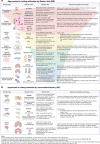
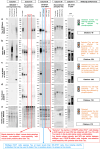
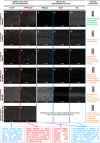

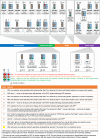
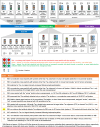

Similar articles
-
A validated antibody panel for the characterization of tau post-translational modifications.Mol Neurodegener. 2017 Nov 21;12(1):87. doi: 10.1186/s13024-017-0229-1. Mol Neurodegener. 2017. PMID: 29157277 Free PMC article.
-
Tau monoclonal antibody generation based on humanized yeast models: impact on Tau oligomerization and diagnostics.J Biol Chem. 2015 Feb 13;290(7):4059-74. doi: 10.1074/jbc.M114.627919. Epub 2014 Dec 24. J Biol Chem. 2015. PMID: 25540200 Free PMC article.
-
A freeze-and-thaw-induced fragment of the microtubule-associated protein tau in rat brain extracts: implications for the biochemical assessment of neurotoxicity.Biosci Rep. 2021 Mar 26;41(3):BSR20203980. doi: 10.1042/BSR20203980. Biosci Rep. 2021. PMID: 33629708 Free PMC article.
-
Immunological demonstration of tau protein in neurofibrillary tangles of Alzheimer's disease.J Alzheimers Dis. 2006;9(3 Suppl):177-85. doi: 10.3233/jad-2006-9s321. J Alzheimers Dis. 2006. PMID: 16914857 Review.
-
[Visualization of tau isoforms by splicing-site specific antibodies].Rinsho Shinkeigaku. 2001 Dec;41(12):1104-6. Rinsho Shinkeigaku. 2001. PMID: 12235809 Review. Japanese.
Cited by
-
Drosophila appear resistant to trans-synaptic tau propagation.Brain Commun. 2024 Aug 8;6(4):fcae256. doi: 10.1093/braincomms/fcae256. eCollection 2024. Brain Commun. 2024. PMID: 39130515 Free PMC article.
-
A consensus platform for antibody characterization.Nat Protoc. 2025 Jun;20(6):1509-1545. doi: 10.1038/s41596-024-01095-8. Epub 2024 Dec 17. Nat Protoc. 2025. PMID: 39690206 Review.
-
The interactome of tau phosphorylated at T217 in Alzheimer's disease human brain tissue.Acta Neuropathol. 2025 May 3;149(1):44. doi: 10.1007/s00401-025-02881-8. Acta Neuropathol. 2025. PMID: 40317322 Free PMC article.
-
A novel monoclonal antibody generated by immunization with granular tau oligomers binds to tau aggregates at 423-430 amino acid sequence.Sci Rep. 2024 Jul 26;14(1):16391. doi: 10.1038/s41598-024-65949-7. Sci Rep. 2024. PMID: 39060263 Free PMC article.
-
Detecting the Undetectable: Advances in Methods for Identifying Small Tau Aggregates in Neurodegenerative Diseases.Chembiochem. 2025 Apr 1;26(7):e202400877. doi: 10.1002/cbic.202400877. Epub 2025 Jan 8. Chembiochem. 2025. PMID: 39688878 Free PMC article. Review.
References
-
- Algenäs C, Agaton C, Fagerberg L, Asplund A, Björling L, Björling E, Kampf C, Lundberg E, Nilsson P, Persson A, Wester K, Pontén F, Wernérus H, Uhlén M, Ottosson Takanen J, Hober S. Antibody performance in western blot applications is context-dependent. Biotechnol J. 2014;9:435–445. doi: 10.1002/biot.201300341. - DOI - PubMed
-
- ALZFORUM antibodies database: Tau antibodies. https://www.alzforum.org/antibodies/search?category%5B616%5D=Tau&page=0. Accessed 30 Mar 2023
Publication types
MeSH terms
Substances
Grants and funding
LinkOut - more resources
Full Text Sources
Molecular Biology Databases
Research Materials

